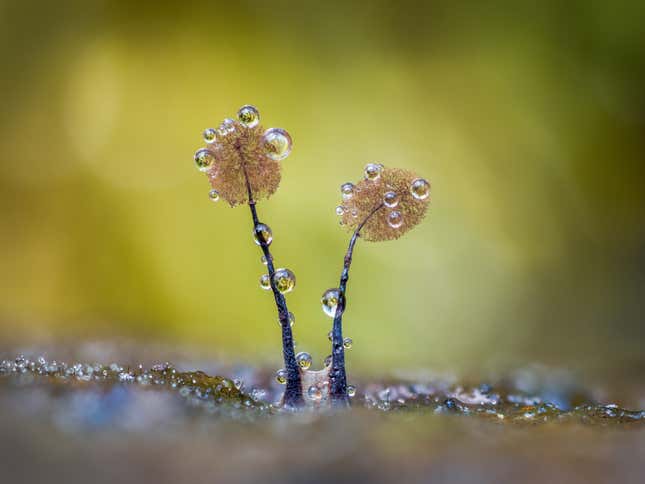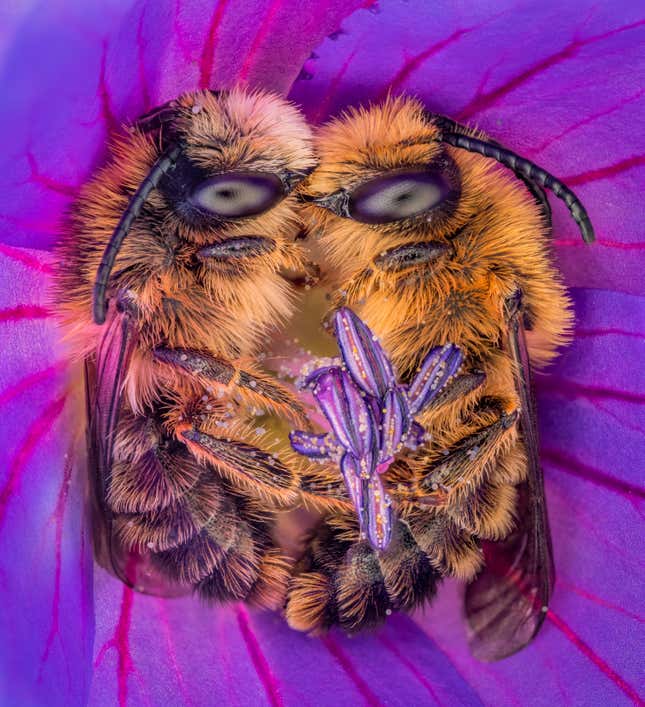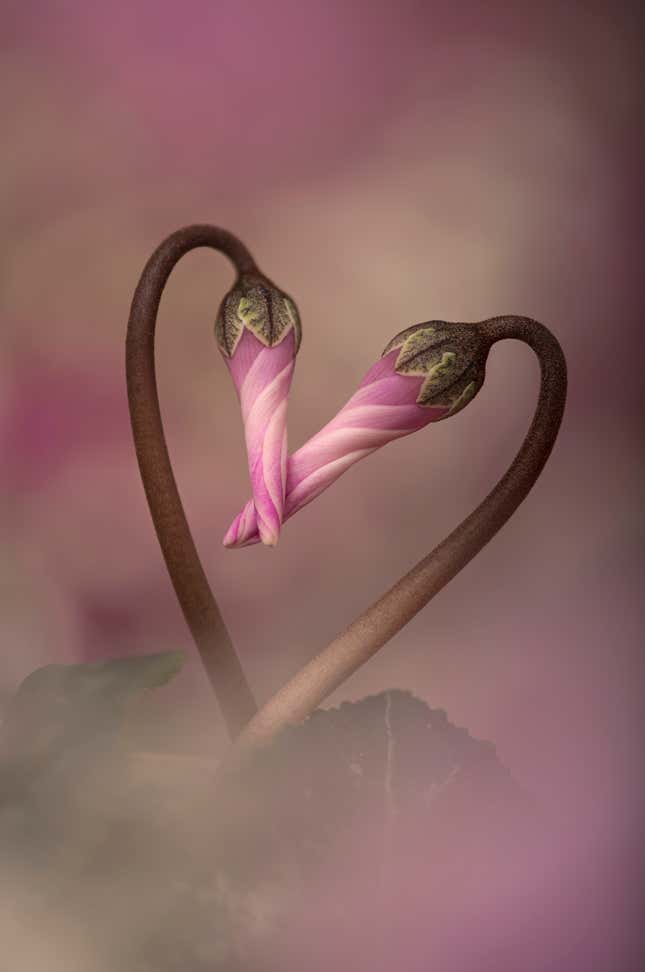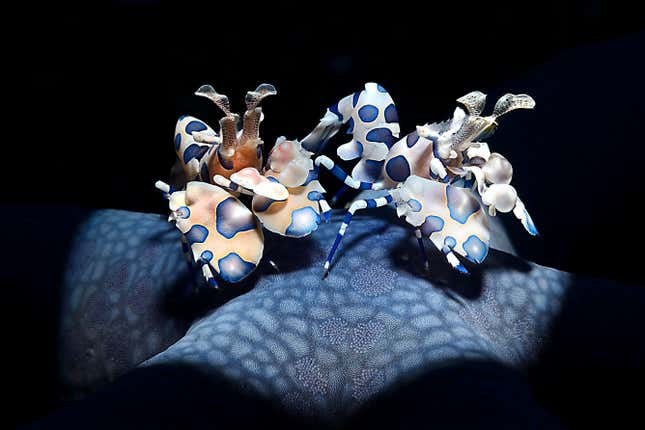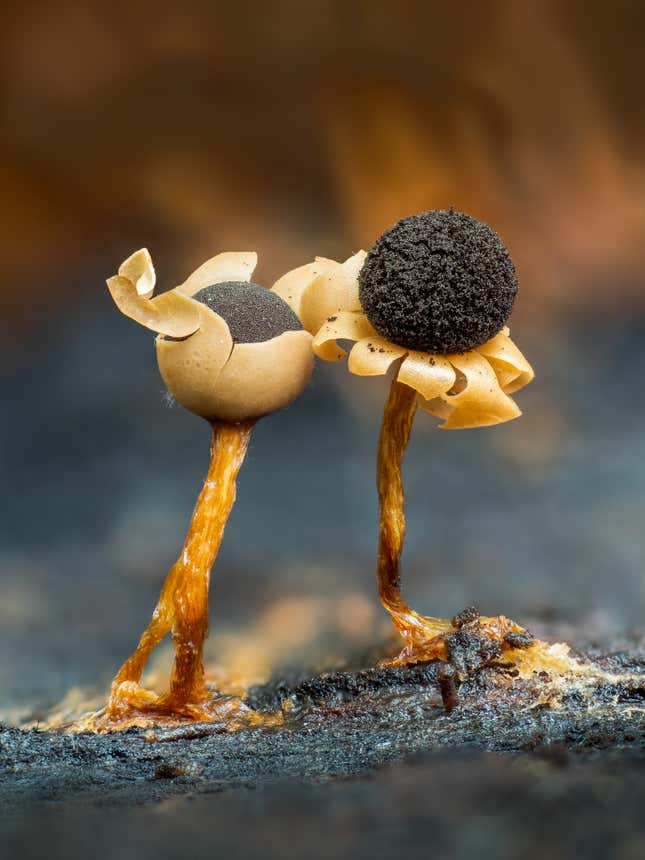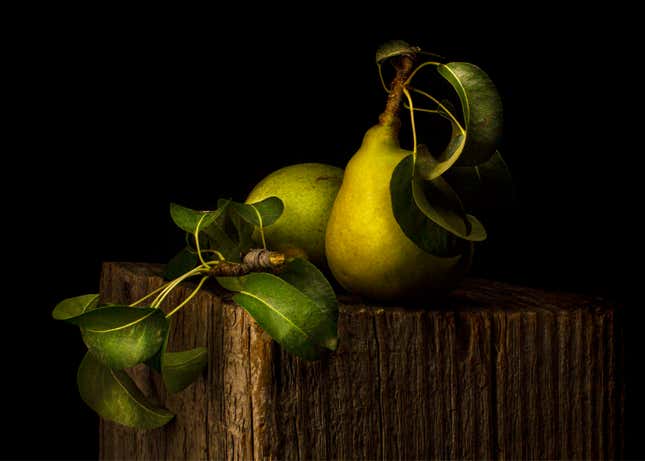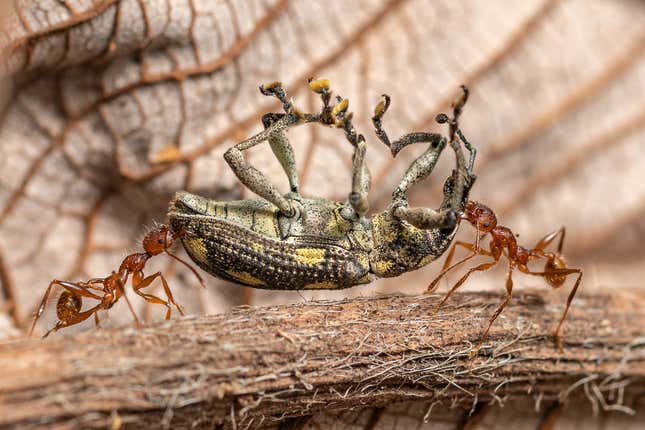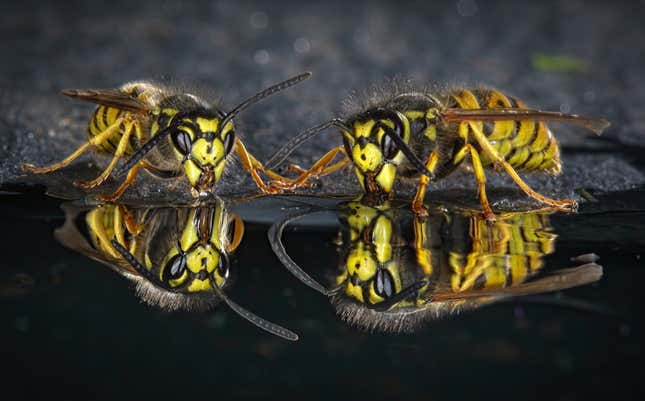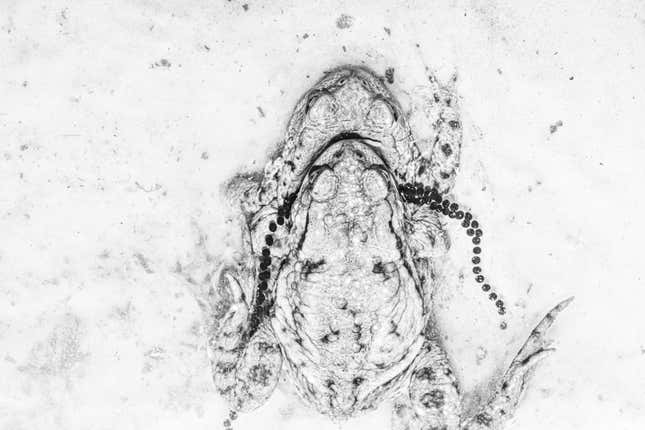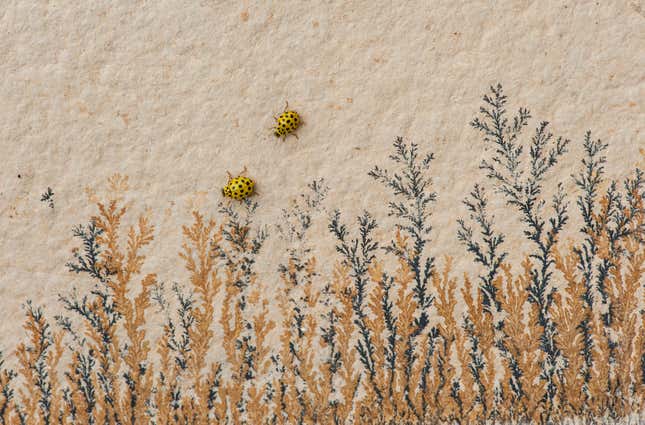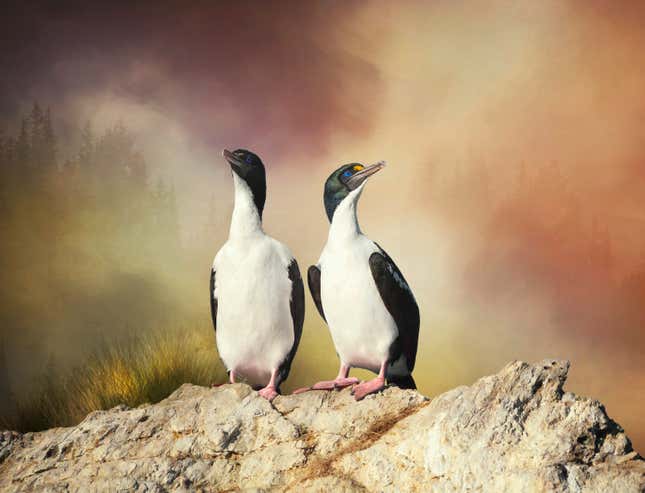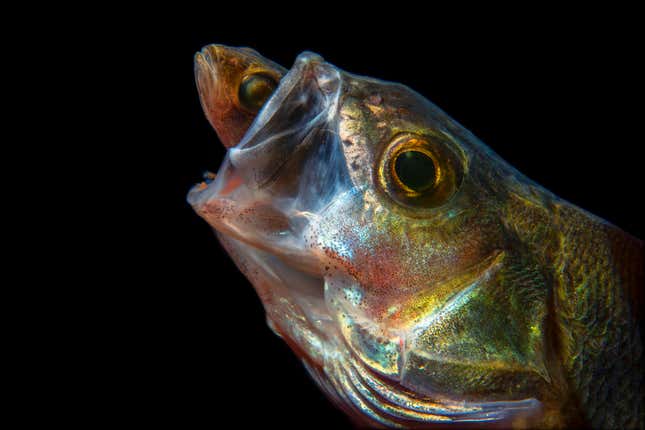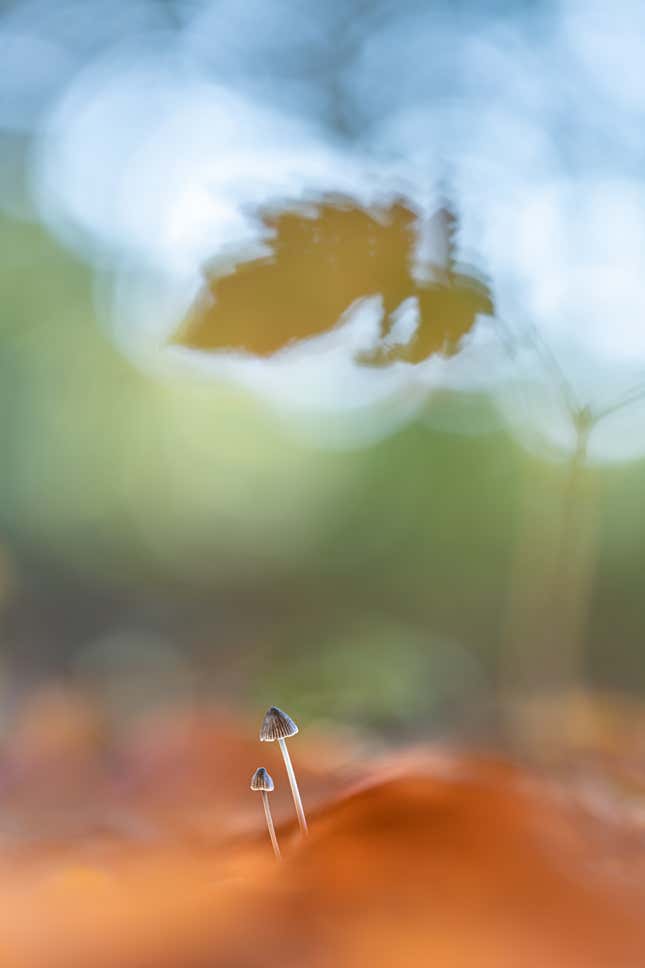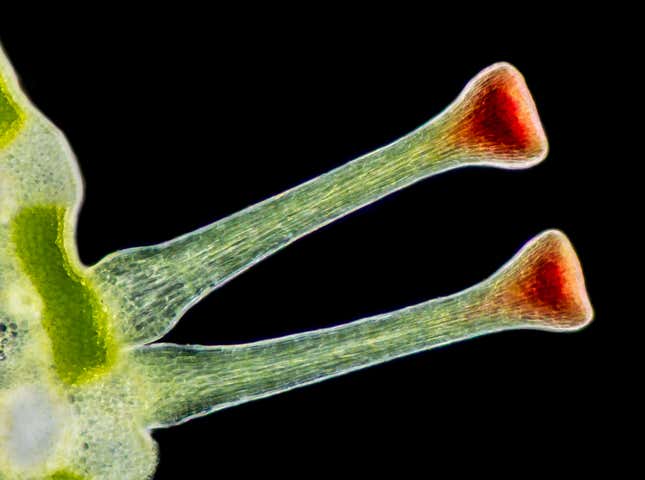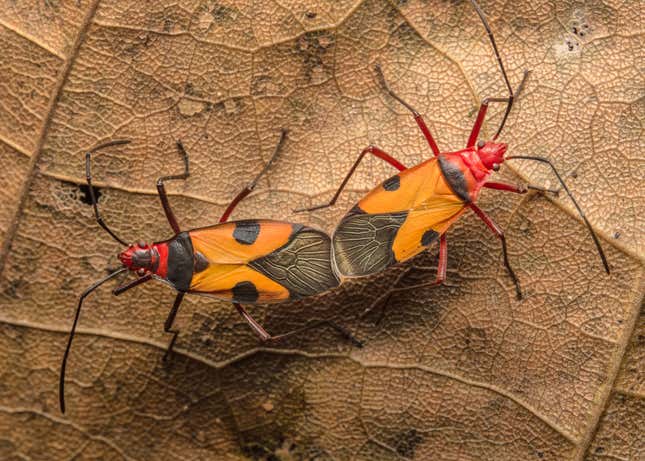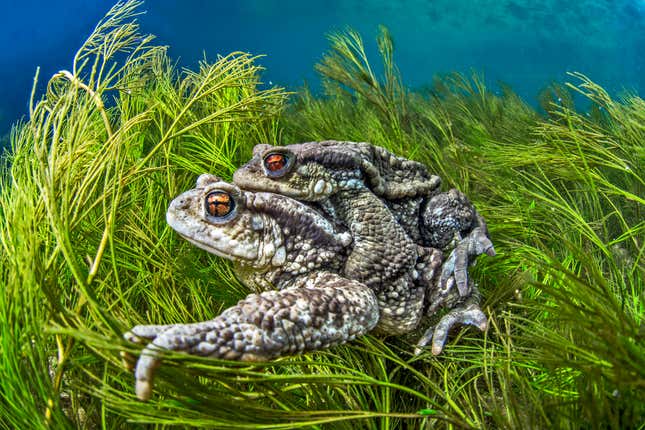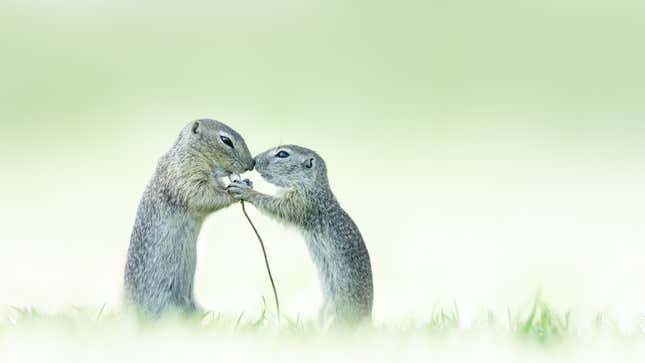
Good things often come better in pairs. That sentiment held true during this year’s Close-up Photographer of the Year Challenge which saw contestants from around the world submit remarkable images of couples navigating the natural world.
Dutch photographer Alex Pansie took home the main prize this year with his almost appallingly adorable image (featured above) of two European ground squirrels munching on poppy on a Vienna lawn. Second place, meanwhile, went to British photographer Barry Webb with his image of slime moulds on a dead apple branch. And Julia Briggs, with hers featuring intricately detailed leaf skeletons, pressed up against a black background, won third.
“These stunning pictures show the power of two, whether that’s two ground squirrels working together or two stag beetles battling for mates in a woodland arena,” CUPOTY Co-Founder Tracy Calder said in a statement. “Yet again, entrants have shown that close-up photography can help us see the world anew and discover beauty in subjects that are often overlooked.”
The CUPOTY Challenge has run annually for three years with a different theme each year. Its creators say the competition, founded in 2018, is intended to encourage photographers to slow down and connect with the natural world. CUPTOY’s fourth installment is just around the corner with entries accepted starting in late February and ending in late May.

